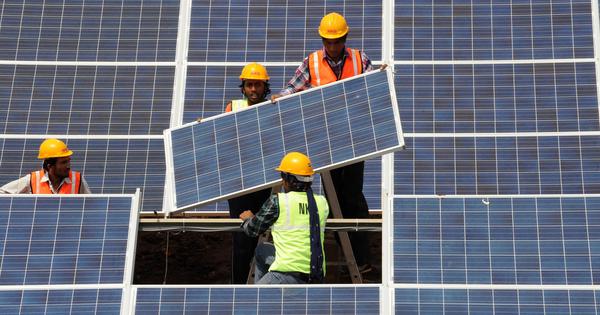
The World Bank has hails India’s solar learning curve and says it inspires action across the World. The World Bank said that India’s path towards fully realizing its renewable energy potential could be a game-changer for its own citizens, as well as for global efforts to tackle climate change.
In a recent report, the World Bank (WB) has said that India was determined to reap the benefits of solar power well before COVID-19 struck. “The country set itself an ambitious target: 100 gigawatts (GW) of solar generation capacity by 2022. That would be a boon for its commercial and industrial consumers, who account for 74% of installed energy capacity, compared with 13% of installed capacity for residential customers and public sector organizations”, says the report.
As of December 2020, India had 38.8 GW of installed solar capacity, including ground-mounted and rooftop operations. Recognizing India’s push for solar energy, the WB says solar is also powering other essential infrastructure, including transport. One of India’s flagship solar projects, the giant Rewa solar park, powers the New Delhi metro rail system: a network that serves over 2.6 million commuters daily. Vital government-led initiatives like 24×7 – Power for All, which committed to providing each household access to electricity around the clock, are helping to empower communities – both literally and figuratively, improving the quality of life, notes the report.
Highlighting the need for new energy sources to meet its electricity needs, the WB report observes that about 250 million Indians still live without access to electricity, which is why India’s path towards fully realizing its renewable energy potential could be a game-changer: for its own citizens certainly, as well as for global efforts to tackle climate change and as a guide for other countries as they invest in solar energy, says the report.
Noting PM Narendra Modi’s push for solar energy, the WB report says that after signing onto the Paris Climate Agreement, India began its solar journey in a serious way, facilitating flexible clean power auctions, attracting record-low solar tariffs and underscoring its commitment to clean energy. At the UN Climate Summit in December 2020, Prime Minister Narendra Modi said India is on track to ultimately top its renewable energy targets – hitting 175 gigawatts before 2022, WB says.
Inspiring other Countries
The World Bank report shows how India’s experience has inspired Nigeria. The densely populated African country loses 45% of its produce after harvest because it can’t be kept cold, resulting in a 25% loss of income for its 93 million smallholder farmers. A pilot project at a food market in Sokoto, Nigeria, aims to change that by testing the business case for refrigeration fueled by rooftop solar units. If it succeeds, the project will demonstrate the potential of this technology for commercial and industrial consumers – the target market for rapidly scaling up solar rooftop capacity – and transform the lives of millions of farmers, the report says.
In Zambia, the World Bank Group’s Scaling Solar program supports a similar auction process to create viable solar markets. The Bangweulu solar plant in Lusaka’s Multi-Facility Economic Zone is expected to supply electricity to as many as 30,000 homes and businesses, complement the country’s hydro-based electricity supply and save electricity purchasing costs for the government.
In May 2021, Senegal announced through the program that two new solar PV plants will provide access to electricity to nearly 540,000 people at some of the lowest rates in Sub-Saharan Africa. Located in the country’s Western region, the new solar plants in Kael and Kahone will help avoid 89,000 tons of carbon dioxide emissions annually, shows the WB report.
Similarly, the Maldives which has no proven fossil fuel reserves is making the transition to renewable energy. In December 2020, the WB approved a $107 million project to help the Maldives accelerate its transition to renewables.
